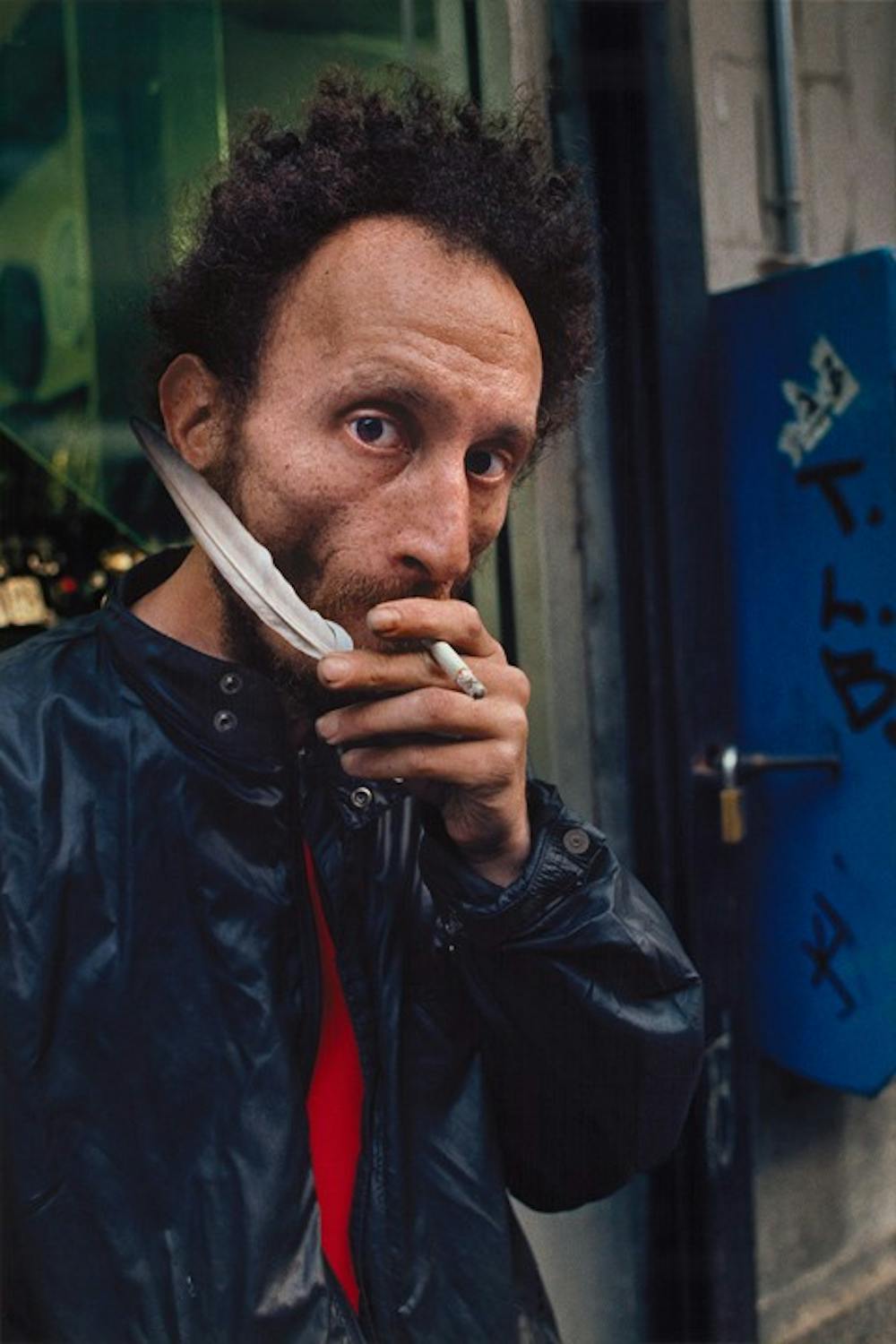Photographer Robert Bergman traveled the streets and back alleys of America for over 40 years, documenting the people and scenes he came across. The “Robert Bergman: Portraits, 1986-1995” exhibit, which showcases his work, opened at the National Gallery of Art on Oct. 11.
The display of 33 gripping portraits was a recent gift to the National Gallery of Art, and art lovers are lucky to see their first exhibition to the public.
Like many other street photographers of his generation, Bergman used a 35mm camera to take black and white photographs. He went into American cities and began to photograph their residents. Bergman’s inspiration came from Robert Frank’s “The Americans,” a photo series that went beneath the surface of American life and helped the nation get a clear perspective of itself.
In 1985, Bergman began to work with color film. Color allowed him to create a new painting-like aesthetic. He used the cities as his palette for these rich portraits. Without special lighting or equipment, Bergman focused on the composition of his images. He built special rapports with his subjects that allowed him to show the individuals rather than their stereotype.
All the images in the “Portrait” series are untitled. The subjects and locations are left without recognition. The only hint of information is the year the images were taken. Bergman takes away all of the elements of context in these images to keep the focus on the subjects. Their bodies take up the majority of the frame and the backgrounds are out of focus.
The emphasis of these portraits is on the emotion the subject brings out through their eyes and facial expressions. The subjects sometimes wear distant stares or gazes but mainly direct eye contact to convey their feelings of mixed emotions. Some of the portraits embody worry and inquisitiveness, while others exemplify resignation and resilience. In other portraits, it is hard to discern exact emotions of the subject, but it is unmistakable that they have a heavy weight on their shoulders.
Bergman not only captures the physical presence of his subjects but also their psychological state. In these portraits, the subjects are shot straight on and encompass the majority of the frame. Bergman cuts off part of their bodies, including parts of their face, creating an awkward crop. Bergman emphasizes the unsettling emotions of his subjects through these uncomfortable compositions. The framing of the subjects creates a tension that enhances the raw emotions of the people in the portraits.
The portraits have a soft light that makes the viewer sympathetic to the subjects. Bergman’s photographic technique avoids professional lighting equipment. Due to this, the environment’s natural lighting created the mood for each photograph. Bergman’s “Untitled” from 1994 is a shot of a woman with short blonde hair. Due to the shallow depth of field, there are soft hues of red and purple in the background. These warm colors in their delicate glow make the subject seem softer, yet sadder. The lighting in each portrait helps further the feelings of each person captured.
Bergman’s series shows the reality of the American streets through tightly cropped photographs. He removes all elements of context from his photographs, such as subjects’ names and locations to create the notion that the emotions of these people are not specific to them, but to all people living under these conditions regardless of their setting.
Again, the images are powerful due to Bergman’s relationship with his subjects. He is able to break down their barriers and let them open up to him. The result is this series of upfront portraits that portray the true human condition in America’s streets and back alleys. Bergman shows us the individuals who are often forgotten or overlooked, forcing us to take notice of this people and wonder about their condition.
The “Robert Bergman: Portraits, 1986-1995” exhibit will be in the west building of the National Gallery until Jan. 10, 2010.
You can reach this writer at thescene@theeagleonline.com.





